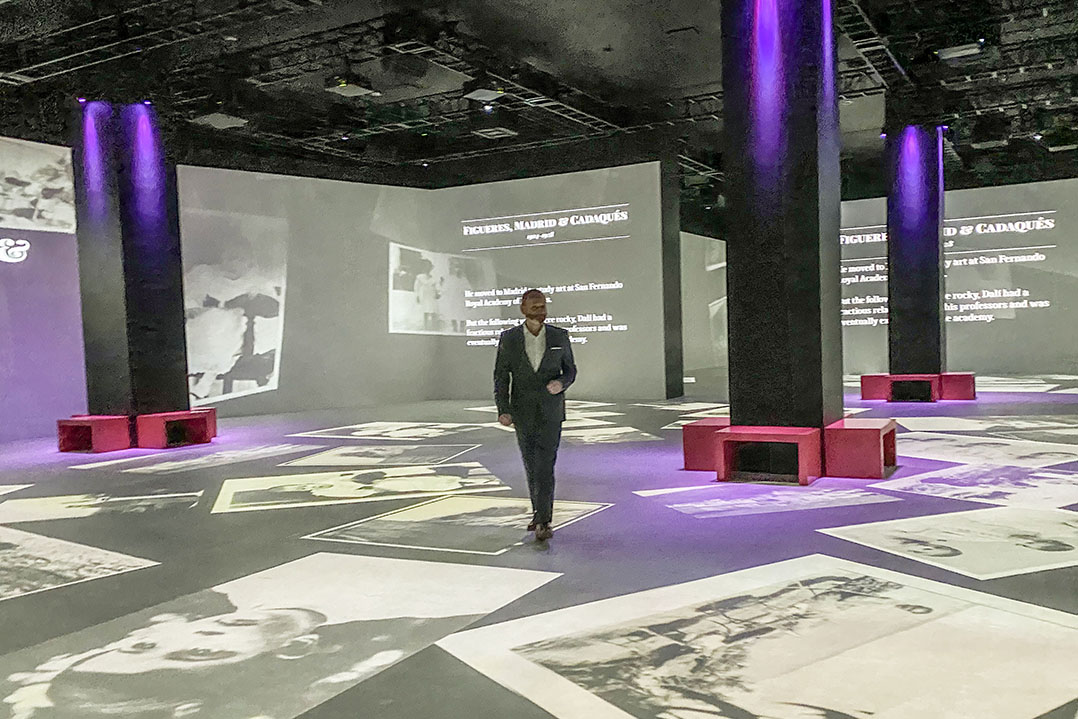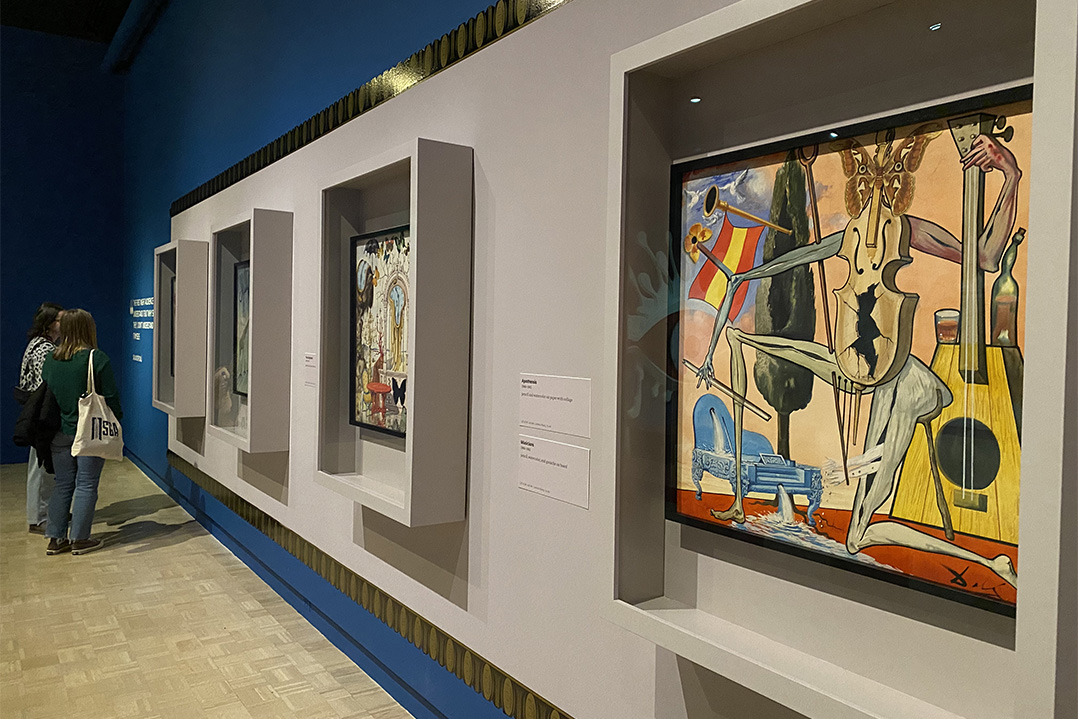Surrealism has taken over the fourth floor of the Indianapolis Museum of Art at Newfields, with a new multisensory, immersive exhibit celebrating all things Dali, including four paintings that have been in storage for decades.
The LUME Indianapolis featuring “Dali Alive” opened in early March and runs through spring 2025. The exhibit’s floor-to-ceiling projectors with moving images from Salvador Dali’s life and artwork, accompanied by music and a piped-in scent, provide an all-encompassing experience for people walking through the main 30,000-square-foot space.
Jonathan Berger, vice president of marketing and external affairs, was on hand for a recent media preview of the exhibit. He said the exhibit shows the evolution of Dali’s artwork, from earlier pieces that are more impressionist than surreal to his better-known work featuring melting clocks and elephants with long, stick-thin legs.
“It kind of tells the story of, OK, this is how we started — kind of a traditional artist — and then evolved into these dreamscapes and, really — in the literal sense of the word — fantastic images,” he said.
The exhibit includes four original watercolors by Dali — who usually worked in oils — that have never been publicly displayed before now. The paintings were created when Dali was commissioned to design the set of the 1961-1962 production of the opera “The Spanish Lady and the Roman Cavalier.”
Berger said it was exciting when the paintings were brought out for the exhibit, and he’s happy the public will have a chance to see them up close before they go back into storage to preserve their easily faded watercolor paint.
“Any time out in any light, no matter how UV-protected it is, it’s always a risk (with watercolors),” he said. “They’ll go back in dark storage and rest for several years. That’s another exciting part about this is that they’re out — let’s drink it in while we still can.”
In addition to drinking in Dali’s surrealism, exhibit visitors can create some of their own. Through an interactive art-generating artificial-intelligence program, visitors choose colors, subjects and descriptions they want for their Dali-esque image, and the program uses those prompts to create a unique image. Visitors can have the image emailed to them, to keep and/or share on social media. There also are Dali selfie stations to take photos surrounded by melting clocks and other iconic Dali imagery.
The LUME cafe and bar also are part of the immersive experience, and were remodeled to accompany the surrealist theme of the exhibit.
The cafe offers a menu of Spanish cheese, olives and other snacks in honor of Dali’s Spanish heritage, as well as specialty cocktails. Bartender Caleb Gwin made what he called the Canvasnova — an updated version of the Casanova, a cocktail featured in a cookbook Dali published.
“It’s an herbal, bittery, fiery little blend,” Gwin said of the orange-hued drink. “We’ve got a nice brandy; we’ve got fresh ginger, fresh orange juice, as well as a pair of herbal liqueurs … and then we have a little sprinkling of cayenne pepper. It’s herbalicious; it’s temperamental — really unique and complex.”
Kind of like Dali.
For more about the exhibit, visit discovernewfields.org.
The life of Dali
Salvador Felipe Jacinto Dali was born in 1904 in Figueres, Spain. At the age of 10, he painted one of his earliest known works, a green-hued landscape that is on display at The Salvador Dali Museum.
According to the museum’s website, Dali attended a drawing school at age 12 where he was introduced to impressionism, and he had his first public exhibition when he was 15.
After meeting his future wife, Gala, in 1929 — who at the time was married to a surrealist poet — Dali joined the Surrealist movement, according to the Dali Museum.
Melting clocks appeared in his work in the early 1930s.
Dali fled Europe during World War II, spending most of the 1940s in the United States. During that time, he had a retrospective at the New York MOMA, and worked with Alfred Hitchcock and Walt Disney on some films.
According to the museum’s website, Dali’s “classical period” began in the 1950s, featuring more religious, historical and scientific themes in his work.
Dali was badly injured in a fire in 1984. He moved back to his home town of Figueres, where he died of heart failure in 1989. He was 84 years old.
For more, visit thedali.org.








